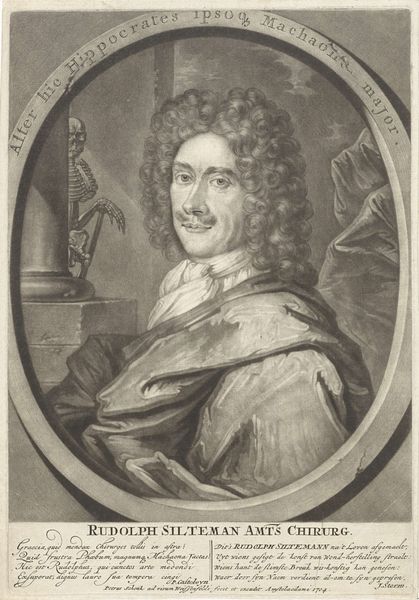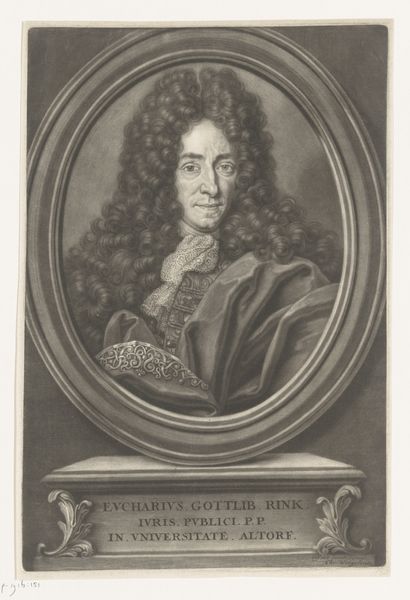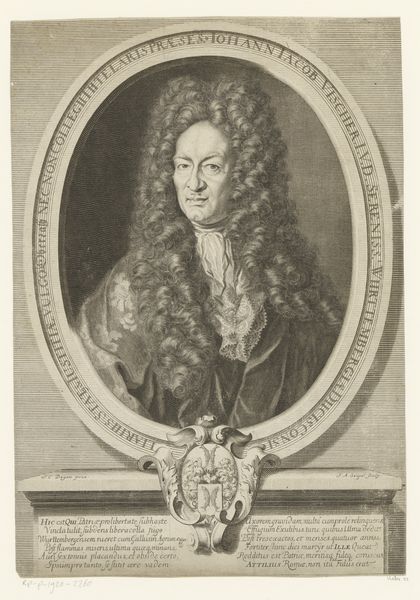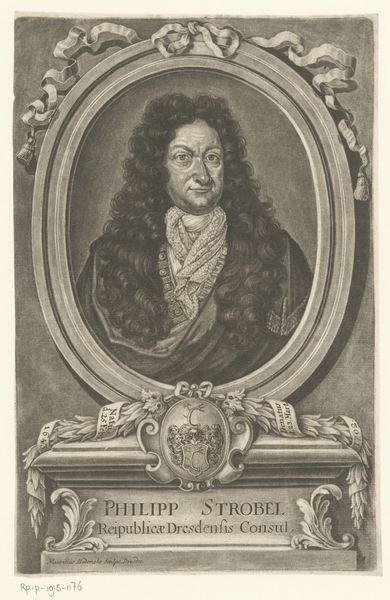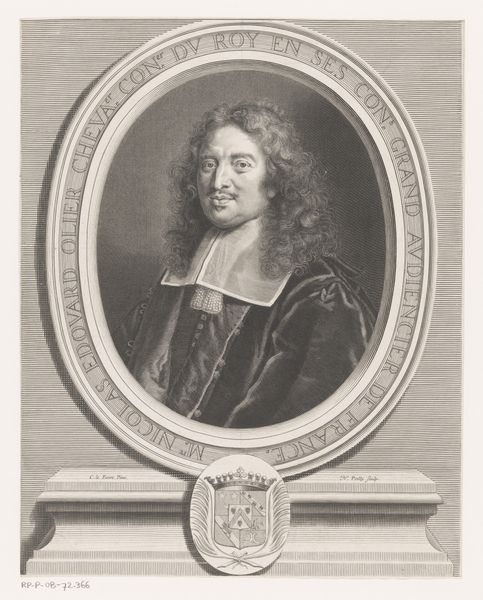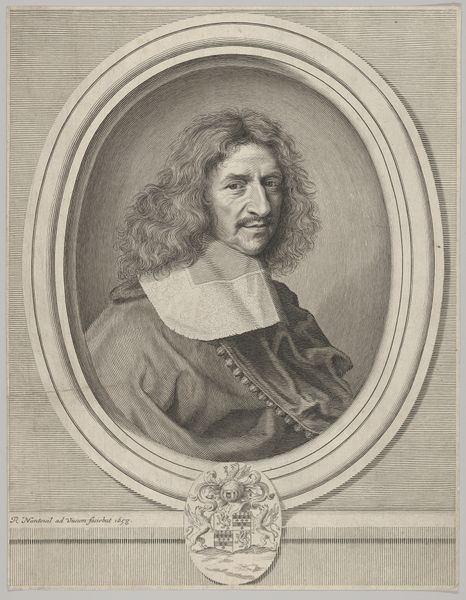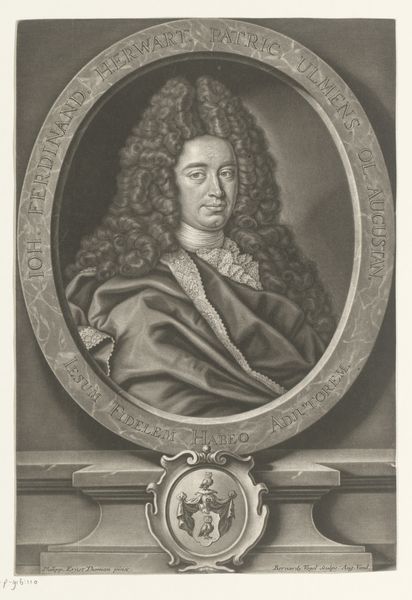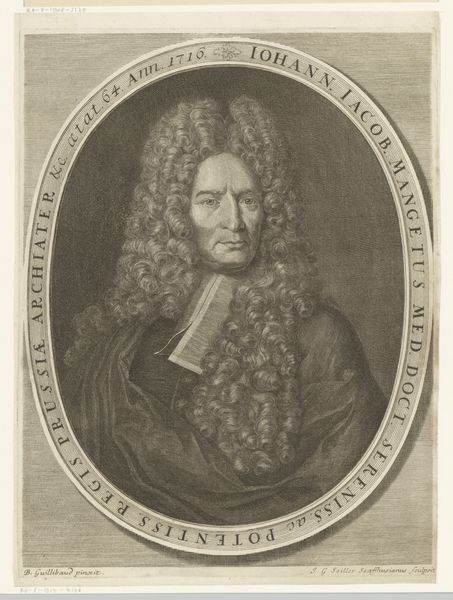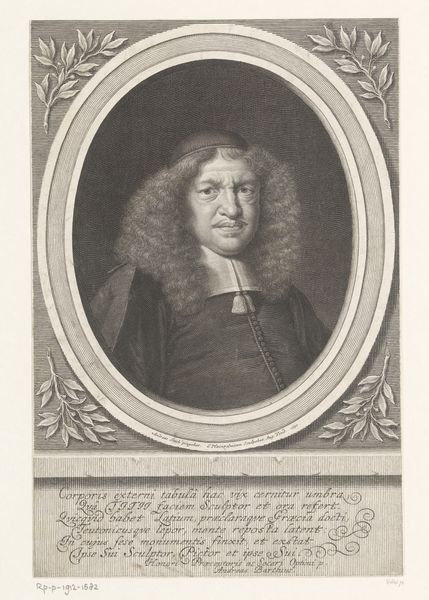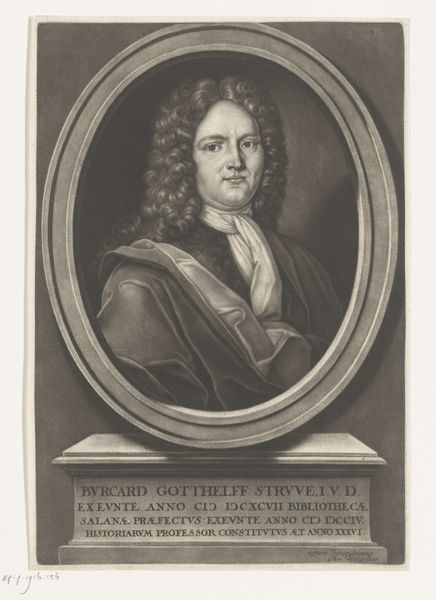
print, engraving
#
portrait
#
baroque
# print
#
old engraving style
#
engraving
Dimensions: height 315 mm, width 210 mm
Copyright: Rijks Museum: Open Domain
Curator: This striking piece is a portrait of Johann Georg Müller, created sometime between 1664 and 1725. It's an engraving, so a print, by Christoph Weigel, currently residing in the Rijksmuseum collection. Editor: My first thought is "stately." There's such a formality in the composition – the oval frame, the elaborate wig, it speaks of power and status. I also find something hauntingly subtle in the etching style. Curator: The Baroque era certainly utilized portraiture to project a sense of authority. How does Weigel reinforce existing societal hierarchies with his imagery, I wonder? The museum has contextual documents that might indicate his political leanings. It may suggest how prevalent biases shape artistic output and reception. Editor: Well, the sitter’s gaze certainly contributes. He's looking slightly down his nose, almost as if judging the viewer. And look at the inscription; he’s identified as a professor of poetry, languages, and literature at the Academy of Jena, so intellect and erudition become tools of power too. Curator: Precisely! And that frame itself becomes a powerful tool. What message does that placement in an oval form send, especially placed above that stone support where his credentials appear so boldly printed? Also, consider the intended audience. Was this primarily for personal display or wider distribution within academic circles? It is the kind of image that speaks volumes about the construction of academic celebrity in his time. Editor: Good question. The scale of the print suggests a purpose beyond domestic display, especially given its potential reproducibility. Disseminating this image amongst scholars, potentially even students, would enhance Müller's standing and influence. The controlled medium helps cement this impression too. Engraving enables far wider consumption compared to painting alone. Curator: Yes! These are insightful considerations of both distribution and how such portraiture influences perceptions in socio-political landscapes. Do we, as art consumers in our current social climate, hold different understandings than Weigel anticipated? Does seeing these images change views and assumptions about access to knowledge and political involvement of past academics, in today’s world? Editor: Definitely. This Baroque portrait then provides so much opportunity to re-think cultural legacies of power and intellect. Thanks for highlighting all that, Curator! Curator: My pleasure! Examining artworks through that kind of theoretical prism helps reveal such unexpected avenues to critical awareness, which makes looking all the more interesting!
Comments
No comments
Be the first to comment and join the conversation on the ultimate creative platform.
